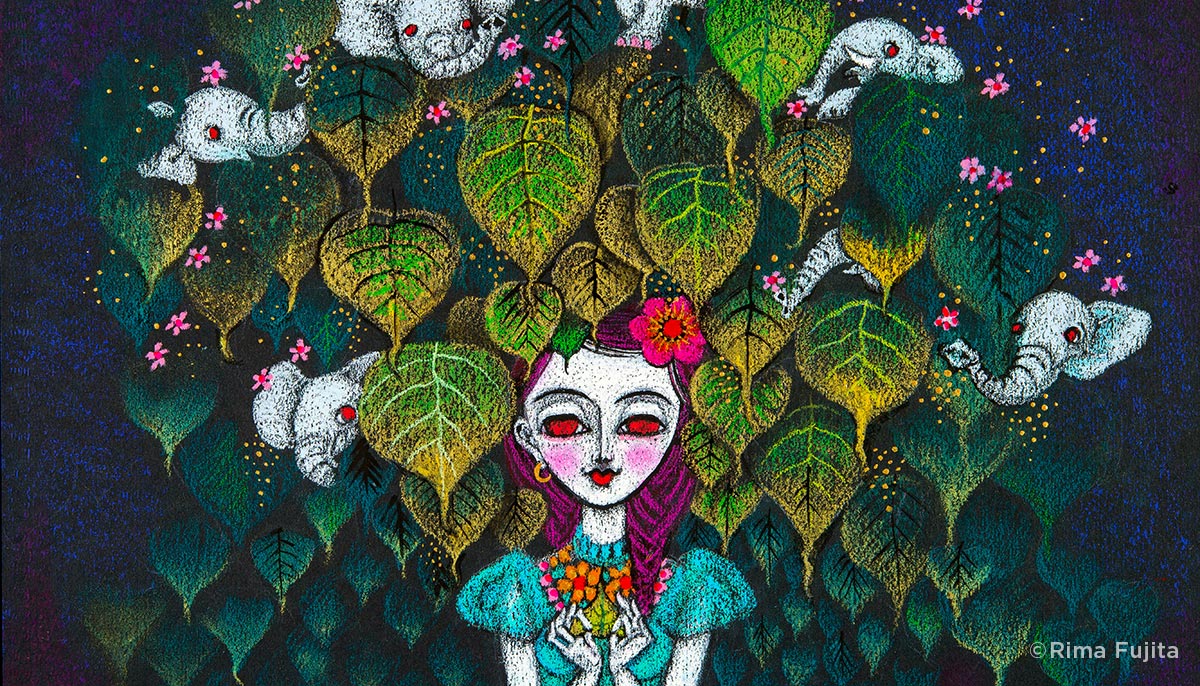My Dharma Friends
A practitioner reflects on the unexpected spiritual friendships he’s made throughout his practice The post My Dharma Friends appeared first on Tricycle: The Buddhist Review.

 Photo by Chris Montgomery
Photo by Chris MontgomeryI walked a long and winding road before I found dharma friends. I’d always thought meditation was basically a solo affair. In my twenties, I got a mantra from a Transcendental Meditation class and meditated twice a day alone in my apartment. After a few years, I stopped, and then many years later I learned T’ai Chi Chih, a Qigong-infused moving meditation. Except when practicing with my teacher a couple times a month, and when I eventually became a teacher myself, I always did this practice of nineteen repetitive movements alone in my apartment. It wasn’t until later that I discovered the meaning of “dharma friends,” which in Sanskrit is kalyanamitra: “a spiritual friend” or “a virtuous friend.”
My first dharma friend might have been the bus driver on my sixty-mile, four-day-a-week commute into Manhattan and back. Usually, I was the only person on the bus for the first twenty miles or so. I became friendly with the bus driver, and one day he joked with me about the meditation practice I’d started on the bus. I wore large noise-canceling headphones, and put a big shawl around my shoulders, then put on sunglasses. This had the advantage of signaling to any other rider that it would be nice if they didn’t sit next to me, or if they did, they might also enjoy being quiet. The bus driver and I began to have conversations at the beginning of the trip, and after fifteen minutes or so, I knew I had twenty minutes left to meditate in peace, on this very bumpy ride. Sometimes we’d talk a bit longer, and then he would interrupt to admonish me and, smiling, remind me it was time to meditate.
When I moved to the next town, still on the same bus line, and into a twenty-six-story apartment building that was affordable housing for seniors, I began to teach Tai Chi Chih, and, with another tenant, started a weekly meditation group that drew a handful of residents a week. There was no formal practice. We played ambient music in the background. There wasn’t much to say afterward, and people were busy moving onto other things. But these neighbors became dharma friends, too.
Then, I met Sister Sylvia, who came to both my class and meditation group and was in her late eighties. She was a part of a small group of Dominican nuns whose Order transferred them to our building for retirement. The two of us decided to read and study Thich Nhat Hanh’s book, Living Buddha, Living Christ. She would bring a small Buddha figurine to accompany us while we took turns reading a paragraph or two out loud, which we would then discuss. She was certainly a spiritual dharma friend. Of course, when one lives in senior housing, people come and go. Jerry, one of my T’ai Chi Chih students in the building who was then 97, had to move to a nursing home a few miles away. So I started going there every Sunday to bring him the practice. After a while, two female residents, Marie and Jackie, joined us. Marie and Jackie were both blind. Jerry was fast losing his hearing. Still, we had great conversations at high volume, for a half hour or more after the practice. We often talked about longevity and mortality, and the past, hardly ever about sickness, or the future. They were dharma friends: virtuous, indeed.
Then the pandemic hit, all the nursing homes were restricted, and I could no longer teach there or visit.
Within a month, I had to close my Manhattan office, where I worked as a clinical social worker, and I started working remotely. I still haven’t returned to Manhattan. I missed the city, and particularly a thirty-minute lunchtime Mass I had started attending at the Episcopal church near my office, where, in addition to workers on break, homeless people, residents of the rather posh neighborhood, and even tourists now and then used to attend. We all took communion together, which I found to be a daily reminder of our interdependency. I usually arrived early so that I could sit quietly in the small garden beside the church, and sit meditatively with my thoughts. Eyes wide open.
A friend, who was sensitive to my loss of the Mass, told me about the New York Zen Center for Contemplative Care, and that since the pandemic, they now had meditation sessions on Zoom. Their midday sit became a wonderful parallel to my lunchtime Mass, and I’ve been practicing there ever since. About thirty to forty people from all over the world—Germany, Ireland, South Africa, the Philippines, Turkey, to name a few—come to the midday sit.
Gradually, I no longer looked at the mid-afternoon sit as a replacement for Mass, but felt, wholeheartedly, that I’d found myself on another part of that winding road, which has now led me to so many friends.
Over time, it seems, it has become a sangha. In the beginning, I didn’t expect that I would make friends. I assumed, as usual, that meditating would be singular. I even suspected that with Zoom, it would be even more detached. Yet as people begin collecting in my living room via those little square videos, I’ve discovered that there is more connection available than I ever thought possible on a computer screen.
After thirty minutes of sitting, there are optional breakout rooms. A prompt from a Buddhist text is given and three to four people in each room get seven minutes to talk among themselves. It’s also made clear that one can talk about anything else, or even simply stay silent. Each day the breakout rooms fill up with a different group of people. As the weeks went on I began to enjoy the anticipatory silence, as I waited for someone to be the first to jump in. By the way, it’s never me.
Without requiring it, everyone is encouraged to keep their videos on. I love seeing people’s rooms in their apartments and houses, and even occasionally a backyard. Sometimes a cat’s tail will appear, undulating across the screen, or a dog barks “hello.” Each day there is a different configuration of dharma friends appearing on the screen, and then into the breakout room.
Nowadays, I’m often reminded of the Three Jewels—the Buddha, dharma and sangha—and think of how all three seem to be present when my dharma friends come to sit zazen, talk for seven minutes on my screen, and most of all, bring friendship to what many of us are now affectionately calling our “Zoomdo.”
I continue to be amazed at how, wandering about for decades, I began, nonetheless, to find friends who, one way or the other, keep me on this winding path. Friends walking with me, sometimes silently, even invisibly, other times right there on my computer screen, each afternoon, offering words of encouragement, and validation of all the anxieties and questions that arise. It makes me want to strive to be a good dharma friend, too.

Get Daily Dharma in your email
Start your day with a fresh perspective

Explore timeless teachings through modern methods.
With Stephen Batchelor, Sharon Salzberg, Andrew Olendzki, and more
![]()
Thank you for subscribing to Tricycle! As a nonprofit, we depend on readers like you to keep Buddhist teachings and practices widely available.
This article is only for Subscribers!
Subscribe now to read this article and get immediate access to everything else.
Already a subscriber? Log in.

 Fransebas
Fransebas 
































